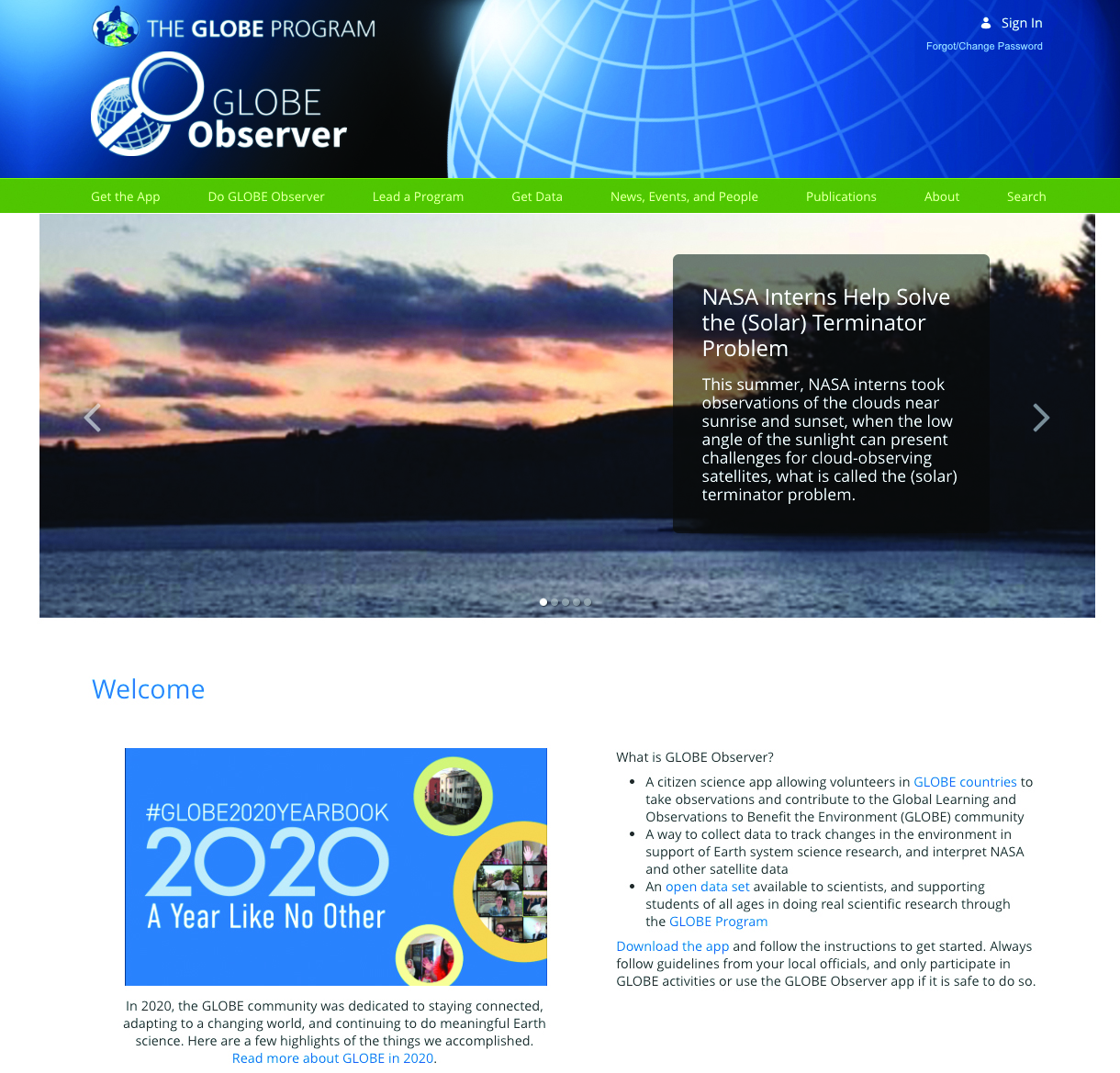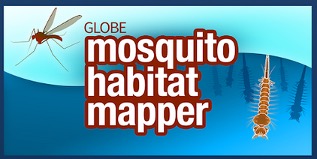Citizen Science
Learning on Location With NASA GLOBE Observer
The Science Teacher—July/August 2021 (Volume 88, Issue 6)
By Jill Nugent
Over the last year, educators pivoted learning models, environments, and delivery modalities to serve the needs of students during a global pandemic. During this time, a key theme emerged: the importance of having meaningful science activities that can be done outdoors and/or online, where students are located. The National Aeronautics and Space Administration (NASA) and its Global Learning and Observations to Benefit the Environment (GLOBE) program offers a collection of real-world, locally engaged, globally connected, 21st-century science projects that can be done in any geographic location (Figure 1).

One NASA GLOBE Observer project is Mosquito Habitat Mapper. Mosquito-borne disease affects millions of people per year and poses an ongoing global health issue. Mosquitoes are associated with diseases including malaria, Zika, Equine Encephalitis, West Nile, Dengue Fever, Yellow Fever, lymphatic filariasis, and many more.
Standing water serves as a prime mosquito breeding habitat. NASA satellites are able to detect larger areas of standing water that follows such events such as hurricanes and flooding, although satellites aren’t able to detect mosquitoes, mosquito larvae, and smaller-scale mosquito breeding habitats. That’s where ground-level observations are invaluable and help to fill in the gaps of data. Your students can help find places where mosquitoes are located and can also look for standing water, where mosquitoes may breed. By participating in NASA GLOBE Observer’s Mosquito Habitat Mapper, students will make a difference and help to reduce the occurrence of mosquito-borne disease.
NASA GLOBE Observer’s free mobile app platform is user-friendly and fun to use. The mosquito project is also part of the United Nations Environment Programmme’s (UNEP) Global Mosquito Alert Program; students have the opportunity to collaborate with NASA and also to be part of worldwide efforts to address a global health challenge.
Project goal: To reduce the risk of mosquito-borne disease to communities
Your task: Locate, photograph, and eliminate mosquito breeding habitats that you observe
Science discipline: Life and Environmental Science
Once students locate a potential mosquito breeding habitat, they will open the GLOBE Observer mobile app and select Mosquito Habitat Mapper. They enter and confirm details such as date, time, and location of their observation. Next, they will be prompted to choose the type of habitat observed: still water (such as a pond or swamp); flowing (still water that is next to a river or stream), or water in a container.
From there, students are guided to narrow down the type of habitat. For example, if students observe water in an artificial container, they can choose the type of container, such as the tray of a flower pot, or an old tire. Next, they’ll be invited to photograph the site and area, and check to see if there are any visible mosquito larvae in the water source. If no larvae are present, the identification step can be skipped. Students will have the opportunity to add additional comments or observations about the habitat.
Finally, students will be encouraged to eliminate the habitat, such as dumping out standing water in the tray of a flower pot, as an example. The process of data entry in the mobile app is expertly facilitated with prompts, resources, and helpful images, and so secondary students will easily be able to complete data entry independently or in peer groups.
Materials you will need:
- Access to an outdoor area
- Smartphone or tablet
- Internet access
World Mosquito Day is August 20 this year, and serves to mark the discovery of the link between mosquitoes and the transmission of malaria. Sharing NASA GLOBE Observer’s Mosquito Habitat Mapper with your students allows them to make a difference as they document and address potential mosquito breeding habitat while they learn about mosquitoes’ connection to global health challenges.
The options for integrating Mosquito Habitat Mapper into secondary life and environmental science courses are endless, and the citizen science program offers excellent resources, research, activities, lessons, and extension opportunities (see Helpful Project Links). Biology classes will enjoy studying the diversity of mosquito species across the globe, their life cycle, adaptations, seasonal variation, and more. Mosquito Habitat Mapper includes your students in real-world global collaboration developed to address questions such as the preferred habitat of various mosquito species, as well as the impacts of weather events and temperature variation on mosquito populations and overall trends.
With locally engaged, globally connected citizen science projects, the world is your lab, and NASA GLOBE Observer facilitates unbounded learner-centered authentic science engagement opportunities—wherever your students are located.

NASA GLOBE Observer’s Mosquito Habitat Mapper at a glance
When: Anytime
How: Find, observe, map, and eliminate mosquito breeding habitat (such as standing water in an artificial container) in your area. Use the free NASA GLOBE Observer mobile app to submit observations
Where: Global
Time needed: 15 minutes
Special equipment needed: None
Cost: No cost to participate
Contact for more information: https://observer.globe.gov/about/contact-us
Safety: As with any science lab, classroom, or field activity, always ensure that you are following recommended safety practices; for more information on safety in the science classroom visit www.nsta.org/safety.
Helpful Project Links:
NASA GLOBE Observer Collection on SciStarter
NASA GLOBE Observer Education Page on SciStarter
NASA Resources for Educators on SciStarter
Smithsonian Science for Global Goals Mosquito Habitat Mapper Lesson
This column is the result of a partnership between SciStarter and the National Science Teaching Association. For more information about SciStarter and other citizen science projects, please visit www.scistarter.org.
Citizen Science Earth & Space Science Technology High School


